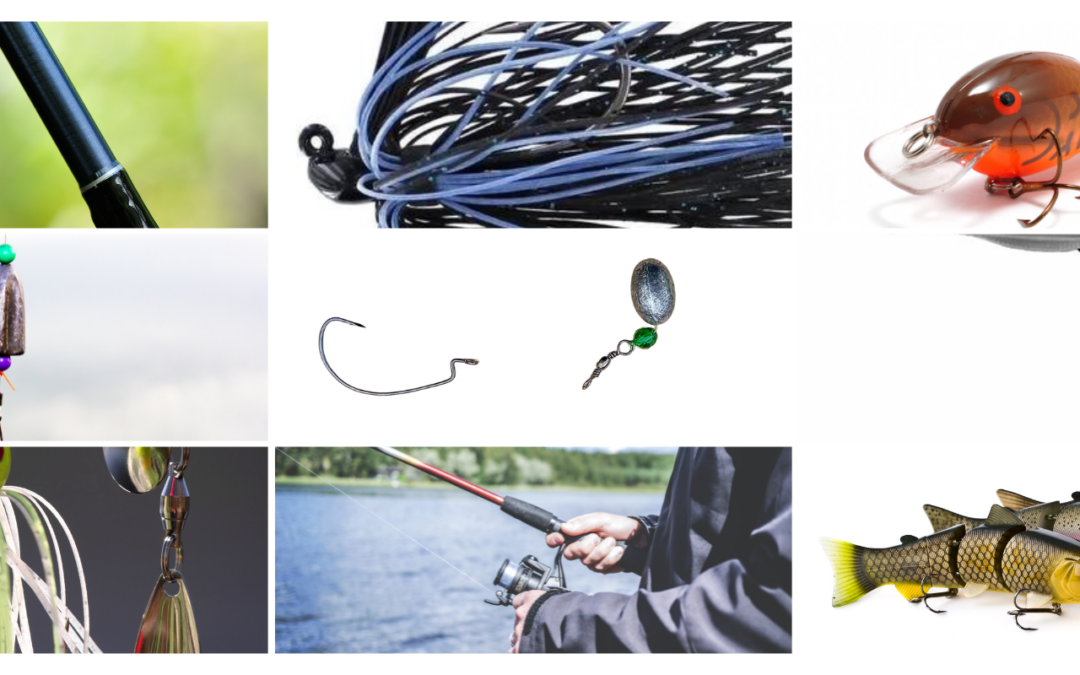Often, joining a middle school or high school fishing team is a first introduction to various standard fishing techniques. As you venture into this exciting sport, it’s essential to familiarize yourself with the vocabulary and techniques commonly used by anglers. In this article, I’ll introduce you to some fundamental fishing techniques you will hear a lot about. I will give a brief overview of each, but you will find more detailed information in future articles.
Casting and Retrieving: This is the fundamental technique used in bass fishing. It involves casting your lure or bait to a specific target area and retrieving it back to the boat or shore. The key is to vary the speed and depth of your retrieve to mimic the movement of prey and entice a bass to strike.
Flipping and Pitching: Flipping and pitching are techniques used to present lures accurately and quietly in close-quarters situations, such as fishing around heavy cover, docks, or vegetation. Flipping involves extending the line by swinging the lure out and dropping it vertically into the target area. Pitching is a similar technique but involves a more horizontal presentation with an underhand cast.
Topwater Fishing: Topwater fishing (my favorite) involves using lures that float on the water’s surface to entice bass to strike from below. This technique can be highly exciting as bass often attack the lure with explosive surface strikes. Common topwater lures include poppers, walkers, buzzbaits, and frogs.
Jigging: Jigging is a versatile technique that involves using a jig—a weighted lure with a hook—to mimic a baitfish or crawfish. The jig is typically hopped or dragged along the bottom or through cover. Jigs come in various sizes, colors, and styles, and can be used in different depths and cover types.
Crankbait Fishing: Crankbaits are lures designed to imitate injured or fleeing baitfish. They have a diving lip that causes the lure to dive and wobble when retrieved. Crankbaits are effective for covering a large area quickly and can be fished at different depths depending on the lure’s diving depth.
Texas Rig Fishing: The Texas rig is a versatile and popular setup for soft plastic baits like worms, creature baits, and crawfish imitations. It involves rigging the bait weedless by inserting the hook point into the bait and then burying it back into the bait’s body. This setup allows for fishing in and around heavy cover without snagging.
Carolina Rig Fishing: The Carolina rig is a bottom fishing technique used to cover larger areas and locate bass. It involves a sliding weight, followed by a swivel, a leader line, and a hook. The weight keeps the rig on the bottom, while the bait (usually a soft plastic lure) moves freely above it. The Carolina rig is effective for fishing deeper water and locating fish along structure and drop-offs.
Drop Shot Fishing: Drop shotting is a finesse technique that involves a weight tied to the end of the line and a hook tied above it. The bait is then hooked above the weight, suspending it off the bottom. This technique allows for a subtle presentation and precise control of the lure’s depth, making it effective in clear water or when fish are less aggressive.
Spinnerbait Fishing: Spinnerbaits are versatile lures consisting of one or more spinning blades attached to a wire arm. They imitate baitfish and create flash and vibration in the water when retrieved. Spinnerbaits are effective in various water conditions and can be used to cover large areas quickly.
Swimbait Fishing: Swimbaits are lifelike lures designed to imitate baitfish, typically in larger sizes. They are often used for targeting trophy-sized bass. Swimbaits can be retrieved at various speeds, ranging from a slow crawl to a fast, steady retrieve, depending on the desired action and depth.
This is just an overview of a variety of fishing techniques, now comes the fun part – practicing them!
Spend time on the water refining your casting and retrieving skills, experimenting with various lures and presentations, and adapting to different fishing conditions.
Spend time off the water practicing your casting skills with drills like these.
Keep in mind that each technique we discussed serves a purpose and can be effective in specific situations. The more you practice and gain experience, the better you’ll become at selecting the right technique for each fishing scenario.
Jimbo’s Expo in January offers a fantastic time for you to get lures at amazing deals, and talk directly with the creators of the boats. You can understand how and why they are made the way they are, which will help you make the right choice in tournaments.
I am available to teach these skills either on a trip or in a class setting for your team. Call me to discuss how I can help! 770-542-7764
Spot On,
Jimbo


Recent Comments